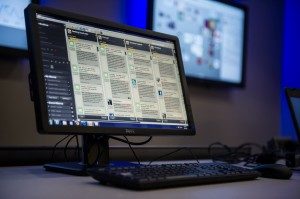 Last week, I published a post on a California school district that has hired a third-party monitoring firm to monitor 14,000 of their students’ public social media posts.
Last week, I published a post on a California school district that has hired a third-party monitoring firm to monitor 14,000 of their students’ public social media posts.
Read: California School District Prevents Crises by Monitoring Students’ Social Media Posts
With all of the cyberbullying and other issues young people face online today, and all of the red flags that can be detected when they’re looked for, personally I think that this school district’s monitoring mission is proactive and much needed.
Professionally, being a digital crisis management specialist, I can also see, plain as day, the many risks that come along with this undertaking.
However, this type of monitoring is far too important to not do on account of the risks. Instead, all schools looking to develop a similar strategy need to work with a crisis management professional who will help them analyze, prevent and plan for the many very serious risks involved.
If your school is considering this sort of monitoring program, here are some important guidelines to follow as a starting point:
Guidelines for schools when monitoring students’ social media activity
Monitor for the right reasons
If you aren’t sure what the right reasons are, hire a professional who has experience with these issues to help you define them. Monitoring for the wrong reasons (and the wrong ways) can lead to lawsuits and a ton of legal and reputation headaches that you certainly don’t want.
Put policies in place
These polices CANNOT penalize students for their right to free speech (and remember that liking things on Facebook is now considered free speech and is protected as such).
Analyze all possible risks involved
Hold a meeting with the right people (i.e.: a crisis management professional who specializes in online legal and reputational issues, the school board, key faculty members, parent committees, etc) and analyze and assess all possible worst-case scenarios that have the potential to develop as a result of this sort of mass monitoring.
Remember: If you can think it, it can happen.
Develop a crisis management plan
This crisis management plan should be developed before any monitoring takes place and should be complete with procedures for handling different issues and crisis scenarios that may develop.
Develop targeted guidelines
Targeted guidelines should be developed for:
- The company hired to monitor
- Faculty members
- Parent committees
- Students
- Etc.
Each one of these policies and guidelines should be uniquely developed for their targeted audience. Each one needs to address key concerns and establish “rules” for this type of serious monitoring.
Be open and honest about this monitoring program
This includes being open and honest with all members of your student body, staff, parents, etc. Many of them will have questions and many more will have concerns. Hold an assembly and meetings where these questions and concerns will be clearly and honestly addressed. In addition…
Make all information on the monitoring program easy to access digitally
Within this written material, provide details that address:
- The mission and goal of the project
- What will be monitored and what won’t
- What will be acted upon, how and what won’t
- An FAQ (frequently asked questions)
- Etc.
Make this written material easy to access digitally.
Note: Reporters, journalists and bloggers will probably be interested in this information as well so be sure to make it accessible to them too.
When possible, monitor apps – not just platforms
As my friend and colleague, Karen Freberg, added via a tweet:
@melissa_agnes Really liked your post – and I think it’s key to look at #sm platforms as well as apps. Always evolving w/ the tech.
— Karen Freberg, Ph.D. (@kfreberg) September 18, 2013
Vow to keep current – and continue to follow through on your promise
Continue to keep all of your codes of conduct, policies, guidelines and crisis plans developed for this monitoring program current. Plan to review them and reevaluate every 4 to 6 months. This may seem like a lot, but with the speed at which social media, trends, features, platforms and user activity changes, this is a big part of your responsibility with this undertaking.
In conclusion
This type of monitoring program is a big undertaking with many risks. However, once the risks are evaluated, prevented and planned for, this type of monitoring program offers some serious benefits and advantages that should not be overlooked.
I encourage all school boards and school districts to seriously consider this type of monitoring for your students. However, I advise you to go into it realistically, informed and with a strong crisis management plan.

Author of Crisis Ready: Building an Invincible Brand in an Uncertain World, Melissa Agnes is a leading authority on crisis preparedness, reputation management, and brand protection. Agnes is a coveted keynote speaker, commentator, and advisor to some of today’s leading organizations faced with the greatest risks. Learn more about Melissa and her work here.
